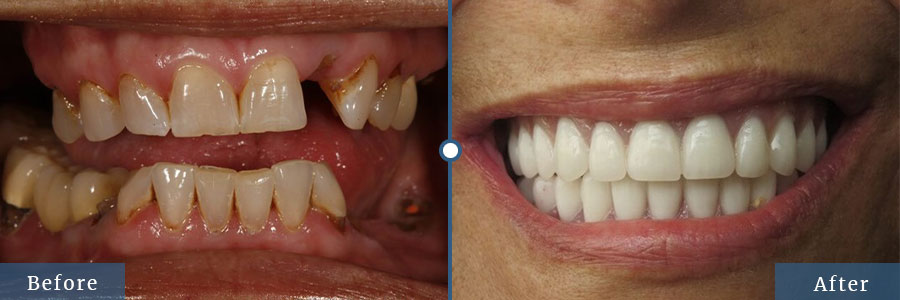Improve the appearance of your smile with dental restorations
Drs. Mary Swift and Morgan Petty are highly skilled and experienced dentists who can provide composite (tooth-colored) fillings, veneers, crowns, bridges, dental implants, dentures, and other types of dental reconstruction. Composite fillings are created to specifically match the color of your natural teeth and are used to restore decayed or damaged teeth. They are also utilized for cosmetic purposes to improve the appearance of your smile. Determining which treatment is best for you starts with a consultation visit with our Dallas, Texas, area team.
Am I a good candidate for composite restorations such as fillings?
Our Dallas Laser Dentistry team will first assess your tooth’s condition and determine if a composite filling is the best option for you – usually when decay/infection is limited. If so, the dentist assisting will carefully clean out the decay or damage and place the composite filling material in layers, building it up until it reaches the proper shape and size. Once the composite filling is in place, she will then cure it with a special light.

What are the benefits of composite restorations?
Composite fillings offer several advantages, including:
- They can be matched to the color of your natural teeth, so they are virtually invisible. They are used in place of amalgams for fillings.
- They provide strong and durable support for your teeth.
- They help to restore the function and structure of your teeth.
- They are less invasive than alternative dental restorations.
What other dental restorations are used to address imperfections or damage to the smile?
Other dental restorations available at our practice that can be used to reconstruct the smile are solutions such as veneers, dental implants, and dental crowns. These are common restorations that can cover imperfections of the smile, provide an extra layer of protection for a weakened tooth, or replace a missing tooth. During an evaluation with our dentists, you can have our team evaluate your needs and determine the most appropriate dental reconstruction solutions.
How do I find out more about dental reconstruction and restoration options?
Our team at Dallas Laser Dentistry works closely with patients to help them find solutions that enable them to achieve and maintain their healthy, beautiful smiles! If you are considering restoration of your smile, either for functional or cosmetic reasons, contact our team today by calling 469 838 5292.


